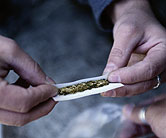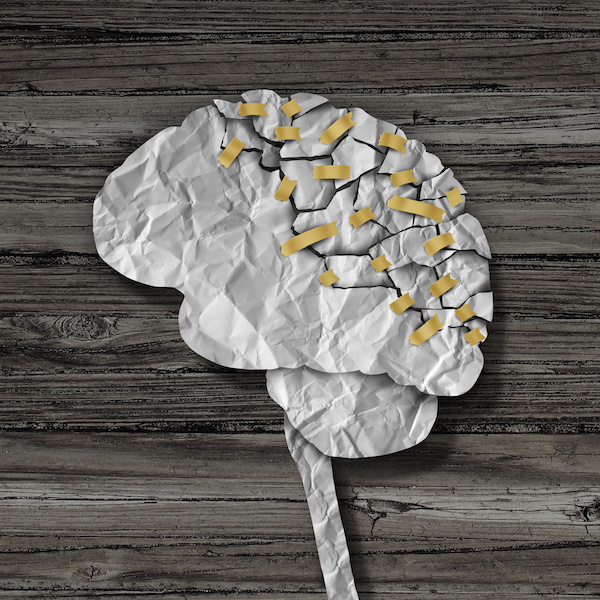
WEDNESDAY, Aug. 26, 2015 (HealthDay News) — Marijuana’s potential effect on brain structure remains a subject of intense scientific scrutiny, but mixed results have emerged from two of the latest studies on the topic.
Researchers in one study have concluded that marijuana use likely does not directly affect the size of the amygdala, a brain site linked with emotion, emotional behavior and motivation.
“We found that while cannabis users had lower amygdala volumes than nonusers, that difference appears to be linked to other predisposing factors,” said senior author Arpana Agrawal, an associate professor of psychiatry at Washington University School of Medicine in St. Louis.
But researchers in the other study found that marijuana use in the teenage years could increase kids’ risk for developing schizophrenia if they carry a high genetic risk for the mental illness.
“If there is a family history of severe psychotic disorders, I would really encourage kids to avoid cannabis altogether,” said senior author Dr. Tomas Paus, a senior scientist at the Rotman Research Institute in Toronto. “If you know these disorders run in your family, then I would be super, super careful.”
Both studies were published Aug. 26 in JAMA Psychiatry.
In Agrawal’s study, researchers performed brain scans on more than 480 twins or siblings as young adults, 262 of whom reported they’d used pot at least once.
Marijuana users were found to have smaller amygdalas than nonusers, a result that agreed with earlier findings, Agrawal said.
But researchers found that brain volumes did not differ significantly between twins or siblings, even if one had used marijuana and the other had not, she said. Both siblings showed smaller amygdalas, regardless of pot use.
Based on this, common genetic factors might influence amygdala size as well as one’s propensity to experiment with marijuana, Agrawal said.
Some environmental factor could also be at play, she added. For example, childhood exposure to adversity can affect amygdala size, and also can make a person more likely to try drugs.
In the other study, researchers drew brain scans and data from three other large-scale studies, amassing a pool of nearly 1,600 participants, ages 12 to 21.
They found that men who reported using marijuana in early adolescence had a thinner cerebral cortex than those who did not, but only if they had a high genetic predisposition toward schizophrenia, Paus said.
The results indicate that marijuana might have some effect on the developing brains of at-risk male teenagers, the study concludes. However, no similar effect was found in low-risk men or in women.
“There is a lot of restructuring going on in the male brain between the age of 12 and 18,” Paus said, noting that schizophrenia begins about five years earlier in men than in women and that early marijuana use might have some influence.
The cerebral cortex plays host to many receptors that bind with THC, the ingredient in pot that causes intoxication, he said. In addition, the male hormone testosterone influences changes in the cortex, and may interact in some way with substances in marijuana.
“It seems that whatever it is in men, it basically makes them more susceptible to it,” Paus said.
An accompanying editorial by Dr. David Goldman, chief of the Laboratory of Neurogenetics at the U.S. National Institute of Alcohol Abuse and Alcoholism, said these findings show that marijuana is not a harmless drug.
“The burden of cannabis’ effects may fall more heavily on people who, because of genetic makeup or early life exposures, are at greatest risk for brain structural changes, psychosis or addiction,” Goldman wrote. “It is safer not to expose people to psychoactive drugs.”
But Paul Armentano, deputy director of NORML, a group promoting marijuana legalization, said the studies indicate that pot is no more dangerous than other legal substances.
“These papers again affirm that cannabis use, at worst, poses far fewer risks to the developing brain than does alcohol, and that its potential role in the onset of, or the exacerbation of, psychiatric illness similarly remains marginal,” Armentano said.
He noted that while marijuana-use rates have fluctuated over several decades, rates of psychiatric illness such as schizophrenia have remained static, providing little basis for claims that marijuana triggers such disorders.
“Nonetheless, cannabis — like alcohol — ought to be regulated appropriately and its use limited to adults, not because its consumption is innocuous but because it is a mood-altering substance that possesses risk potential, particularly for adolescents,” Armentano added.
More information
For more on marijuana, visit the U.S. National Institutes of Health.
Copyright © 2025 HealthDay. All rights reserved.

